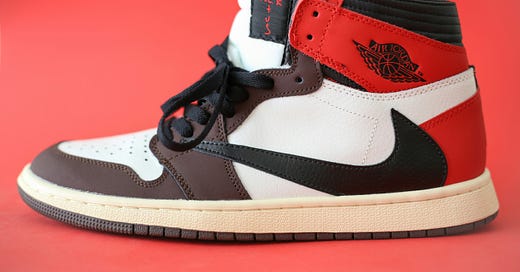Content + Culture Are the New Cash
The days of brands just selling *stuff* are dead. And that's exciting as hell.
This sentiment has come up twice in the past week, most recently when discussing a colleague’s experience at CES. He made the (great!) observation that lots of exhibitors opted to treat their exhibit like a stage set versus (as the great Charles Sylvia put it so eloquently early on in my career) a cathedral of commerce. And what’s true about most cathedrals is that, while they are marvelous monuments built to have so much value, they’re not often the most buzzy places to be…
By integrating a stage and some purposeful programming into the exhibit, these CES exhibitors also introduced kinetic energy. They created reasons for attendees to come back – playing off of organic curiosity to see what’s next and/or set a schedule that actually told them specifically when to come back to see something worthwhile. They created a space for fireside chats with executive leadership, they created sponsored stages for thought leaders, and they deployed event-in-an-exhibit strategies to get their consumers and the press bumping shoulders in their exhibit. Standing room only…
But what they really did was create an environment where they could control the message, deploy their content on their terms, and ensure that it drove the cultural conversations they wanted to be a part of. That’s a BIG deal. And it’s really smart. Because these brands understand nobody's lining up around the block at 3 AM for your new product drop just because it's 10% better than the competition. What they will line up for? A moment. A vibe. A piece of bigger conversation.
Modern consumers aren't just buying products – they're collecting experiences, trading social currency, and flexing, evolving and growing their personal brands through what they choose to engage with.
Why This Hits Different
The old playbook was simple: Make things. Market things. Coupon things. Sell things. Repeat.
But that's not enough anymore, because your audiences aren’t just buying products – they're investing in their identity. And the identity of their peers. They're looking for brands that:
Create content worth sharing
Shape cultures worth being a part of
Build experiences worth lining up for
Drop collabs worth camping out for
Start conversations worth joining
And here's where it gets really interesting: The brands that get this aren't just participating in culture – they're actively creating it. They’re charged. They're turning retail spaces into community hubs, product drops into cultural moments, and brand partnerships into creative collaborations that people actually give a damn about.
Winning brands are no longer solely obsessing over market share and shelf space. They’re trading in a different kind of currency altogether. They're dealing in cultural capital, and business is booming.
Another Experiential Revolution
The sharpest consumer brands, B2B brands, and even healthcare brands are looking to drop cultural moments that ripple through social feeds and media channels. Because striking gold in cultural channels is the strongest form of earned media.
This is why experiential marketing isn't just trade show booths and pop-ups anymore – it's the frontier of brand building. Actual brand building because when done right, a single activation can generate more authentic engagement than a year's worth of traditional advertising. Experiential moments are becoming the hub for brand builders with activations becoming a real content engine that fuels brands’ social channels, PR and earned media strategies, and UGC opportunities.
Look at what Glossier did with their flagship stores. They didn't just build beauty shops; they dreamed up Instagram-worthy, ever-long brand experiences hyperfocused on Gen Z’s love for both max-and-minimalism. That's not retail – that's cultural real estate.
And Travis Scott doesn't just do brand collabs – he creates universe-bending experiences that blur the lines between music, fashion, and gaming. That’s the power of experiential – to tap into the web of consumer passions and drop co-creation opportunities so that consumers stop just seeing themselves in the brand, and can actually help forge the brand in their likeness.
A Little Real Talk
Brands, your audience can smell authenticity from a mile away. They know when you're just trying to buy your way into their world. So, you can't fake cultural currency – you have to earn it.
The brands that are going to win tomorrow are the ones that understand:
Culture moves faster than the speed of social
Content is a conversation, not a broadcast
Experiences beat advertisements
Authenticity isn't a campaign strategy – it's a business model
The Future Is Already Here
Look, I'm not saying traditional marketing is dead. I'm saying it's not enough anymore. That may not be novel, but it is my POV. The future belongs to brands that know how to turn their equity into experiences, their products into culture, and their audience into a ferocious community that has helped shape the brand itself.
The really exciting part? We're just getting started. The tools for creating and trading in cultural currency are evolving every day, and the possibilities are endless. The only question is: Are you ready to start banking differently?
BAM! I'm here for every second of it! 🚀
Photo by Sahand Babali on Unsplash




